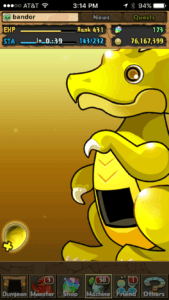We’ve written extensively about different mobile game monetization models. While certain monetization techniques lend themselves more naturally to different genres, the majority of the top grossing games focus on consumable in-app purchases (IAP). Games like Candy Crush sell players extra lives and power-ups, while town building games like Clash of Clans sell players gems to speed up production times.
Although these are the most familiar freemium models in the US market, there’s another category in Japan that’s wildly successful: gacha. While gacha was once isolated to the eastern markets, games like Cash Royale have taken this model to the top of the US charts. Nintendo’s recent release of Fire Emblem Heroes, a gacha title from a traditional Japanese franchise, has held fast in the top 10 grossing apps in the US, further confirming a domestic appetite for gacha.
What is Gacha
Gacha is an abbreviated name from the Japanese gachapon, a specialized toy vending machine. The catch is that you don’t know exactly what the toy is going to be, only that it comes from a specific set. Perhaps you’re pulling different characters from an anime. You may want a specific character, or if you’re a serious collector, you might want the entire set!
There are multiple reasons this dispensing method is compelling for both the buyer and seller. As the buyer makes several pulls trying to get specific characters, he will inevitably get a bunch of duplicates that he doesn’t want. Clearly, this is advantageous for the seller. There aren’t too many opportunities to sell someone something he doesn’t want! When the buyer is trying to get the last character in a set, the odds become especially good for the seller!
Despite stacking the odds against the buyer, it’s still an exhilarating experience to pull a character that you want! Furthermore, the cost of each individual pull is generally low enough relative to the value of what you’re hoping to get that it’s a tempting proposition. If this sounds similar to the rush a gambler gets when placing a bet, you’ve got the right idea!
Gacha in Mobile Games — Puzzle and Dragons
One of the first gacha games in the US market was Puzzle and Dragons (PaD). It was originally a Japanese game, and still earns the bulk of its revenue in the Japanese market. Perhaps it came to the US market too early or maybe it just helped prime the US market for the current wave of gacha games. Nevertheless, it’s still going strong.
The primary revenue driver in PaD is the Rare Egg Machine (REM). Players can spend five magic stones to pull the REM in hopes of getting a good character for their team. Generally, only a specific set of characters will be featured in the REM at a given time. As players collect more characters in a given set, the odds of pulling one of the remaining characters instead of a duplicate become increasingly stacked against the player. Many of the elite characters also have lower probabilities of being drawn, many at less than one percent. New characters are regularly released, and they often have better stats than existing characters. Therefore, players chase after the new characters, despite a tremendous risk of pulling duplicates of old characters. It’s not unusual for top-spending players to drop hundreds of dollars chasing after a specific new character.
Gacha in the US Market — Clash Royale
Although Puzzle and Dragons has a significant following the US, Clash Royale has been the most successful gacha title in this market. The game has regularly camped atop the top grossing list since its release in January 2016. Its monetization model is a little different than PaD, though. First of all, there are only around 50 characters in Clash Royale compared to over 3,000 in PaD. While this seems like it’s much less conducive to getting your players to chase after low probability characters, Clash Royale requires you to draw several duplicates of a character to keep leveling it up. Ultimately, this keeps players opening more chests to get the their desired characters.
Second, Clash Royale actually manages to include a double layer of gacha in its core game loop. Players earn a chest from winning a battle, assuming they have room to hold a new chest. Usually, they get a silver chest. Somewhat less frequently, players get a gold chest, which has more cards in it. On very rare occasion, players get a magical or super magical chest. These chests have a ton of cards in them! That doesn’t necessarily mean they’re good cards, though. Nevertheless, players get to experience the high of finding out what kind of chest they won, only to get a new rush when they’re allowed to open the chest after a timer. So much gacha!
Final Gacha Thoughts
Ultimately, the key to both of these games is that you can’t buy exactly what you want. You have to take a chance. Just like pulling a slot machine, your expectations are fairly low, but it might be your lucky day! If you do pull what you want, that’s a rush that players of all demographics and skill levels can enjoy. Japan has known about this for years. The US knows about it now too.
In addition to the techniques utilized by these two games, there are several other forms of gacha that have seen great success. Gamasutra wrote extensively about different types of gacha, including the now banned kompu gacha. It turns out that when you require players to collect every character in a set to unlock a new character (this is the essence of kompu or complete gacha), it’s simply too powerful of a money making technique. Even with restrictions in place, gacha yields incredible results when integrated in fun games. Expect to see a lot more gacha in the US market as developers and players alike get more comfortable with the model.

